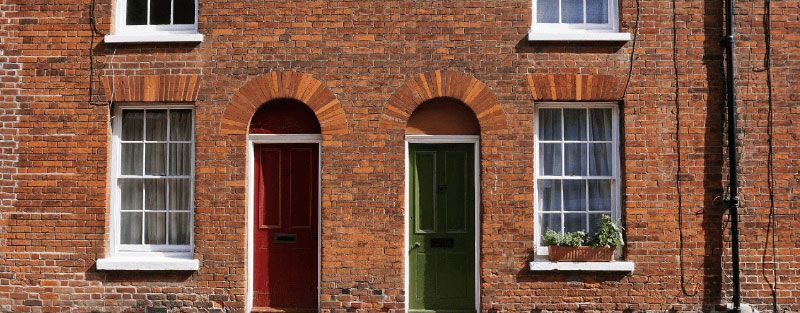What is a Mortgage Guarantor?
The basic requirements for getting a mortgage are generally a good credit history, a steady and reliable income, plus a cash deposit of a minimum 5% of the value of the property being purchased. Once you have those in order, lenders can assess your suitability as a mortgage borrower, taking into account your employment record, credit history, and general finances.
If you’re struggling to meet any of these basic criteria, then it can be a major barrier to you obtaining the mortgage that you want. When this is the case, it might help to have a mortgage guarantor to support your mortgage application.
A mortgage guarantor is generally a parent or close family member who takes on some of the mortgage risk by acting as a safety net for your borrowing. To be a suitable guarantor, this individual will need to meet the eligibility criteria of the mortgage lender, have sufficient disposable income available to cover your monthly mortgage commitment, and/or have cash savings or equity in property available to offer as security in case of your default.
Why use a mortgage guarantor?
When you apply for a mortgage, lenders will be looking at every aspect of your finances to check that you have the capacity to make the monthly mortgage repayments each month. For some people, this may throw up problems.
For example, you may have just recently qualified in a career and will start on a low salary, but fully expect this to increase each year as you progress. Perhaps you have just got out of a relationship and are burdened with debts or poor credit history. You might be a first-time buyer and haven’t yet built up any credit history or have very little savings, or you may be self-employed and unable to demonstrate a reliable income stream to prove affordability.
In these situations, a guarantor might provide the comfort to a lender that, should you be unable to maintain the mortgage repayments, then there is someone else that they can rely on to make these for you. Having a mortgage guarantor may even mean that you can obtain a 100% mortgage, taking away the need for the usual cash deposit.
Who can be a mortgage guarantor?
This differs from lender to lender, but in most cases, a mortgage guarantor will be a close family member such as a parent, step-parent, grandparent, or brother/sister. Some lenders may even consider a close friend or a more distant relative. In any case, in order to be a mortgage guarantor, the individual will need to meet the following criteria:
- They must be over 21 years old
- They must either have cash available to deposit with the lender as security behind their guarantee, or they must own their own home outright or have built up enough equity in their home to meet the lender’s criteria (usually a minimum of 30%)
- They should have sufficient income to prove that they can meet any defaulted repayments, as well as paying their own mortgage if they still have one
- They should have a good credit history
Lenders will also insist that a mortgage guarantor gets independent legal advice before going ahead with an application, to make sure that they are fully aware of the liability that they will be taking on, and have not been coerced into anything.
If a mortgage guarantor already has their own mortgage, this will not usually be affected when they go through the guarantor process. However, it is worth noting that it could affect any future mortgage or remortgage applications they may make. This is because as a guarantor, they are responsible for paying some or all of your debt, so the lender must take this into consideration when calculating their general finances and affordability.
What is a guarantor mortgage?
Not all lenders are willing to consider guarantor-assisted mortgage applications, so if you are interested in using a guarantor alongside your mortgage application, you will need to look into the specific type of mortgages that are available. These are generally referred to as ‘guarantor mortgages’, although some lenders may also refer to them as ‘family mortgages’, or ‘springboard mortgages’.
When you take out a guarantor mortgage, your guarantor will not own a share of your property or be named on the title deeds, but they must legally agree to be responsible for making the mortgage repayments should you fail to do so. The full extent of the guarantor’s liability will vary from lender to lender and will also depend upon the type of guarantor mortgage applied for. For this reason, it is essential that the guarantor fully understands what they are entering into and takes independent legal advice before committing to anything.
Depending on the type of mortgage guarantee being provided, some lenders may offer a 100% mortgage, saving the borrower the usual minimum 5% cash deposit needed. This might make these mortgages particularly attractive to first-time buyers and low-income earners who could be struggling to find the cash deposit.
It might also be attractive to parents/relatives who want to support a family member to get onto the housing ladder but are reluctant to gift their savings as a deposit. They might instead be prepared to offer their savings behind a guarantee, allowing them to retain ownership of their funds – even though they won’t be able to access them until their guarantee has been released. This is normally after 3-5 years or when a minimum level of equity has been built up in the borrower’s property (usually 20%), or when the borrower is in a position to get a mortgage on their own without the need for a mortgage guarantor.
There are a number of things to be taken into consideration when looking at guarantor mortgages. Firstly, guarantor mortgages generally come with a slightly higher interest rate than a standard mortgage so, as with all mortgages, you must make sure that you can afford the monthly repayments before making any commitments. Secondly, it’s important to remember that your guarantor could be liable for any mortgage arrears or shortfall if your property has to be repossessed and sold, so it’s not a responsibility to be taken lightly.
Different types of guarantor mortgages
Guarantor mortgages come under a few different names and criteria. Generally, you’ll find they fall into one of two categories. These are ‘savings as security mortgages, and ‘property as security’ mortgages.
Savings as security mortgages work by using the guarantor’s savings as security behind the guarantor’s guarantee. Mortgage lenders will normally pay a nominal amount of interest to the guarantor on the savings they have deposited as security. The guarantor will place an agreed amount into a savings account with the lender, which the mortgage lender then has control over. The amount deposited will typically be around 5-20% of the property’s purchase price and, whilst the funds are still owned by the guarantor, they will not be able to access them without the prior agreement of the lender. The savings are retained so that if the borrower falls into mortgage arrears and the guarantor fails to cover the arrears, the mortgage lender has the power to take some or all of the savings to clear what is owed to them.
Similarly, if the mortgage lender repossessed the borrower’s property because of default, and when sold there is a shortfall between the sale price and the amount needed to repay the mortgage, then once again the lender can take the savings to clear any shortfall. It is important to note that if the amount held in savings is not sufficient to fully cover the outstanding liability, then the guarantor may still be liable for any additional shortfall. Their liability may not be restricted just to the amount deposited in the savings account.
With property as security mortgages, the guarantor uses the equity in their own property as security behind their guarantee, instead of cash savings. They can generally only do this if they own a high proportion of their property outright. With this type of guarantor mortgage, your guarantor could be at risk of having their home repossessed if you fall into substantial arrears or if there is a shortfall on repossession. In most cases, before the lender takes any legal action, the guarantor will arrange to remortgage their own property to raise sufficient funds to meet their guarantee liability and pay off the borrower’s mortgage debts before they lose their home.
You may also come across Joint Borrower Sole Proprietor (JBSP) mortgages. These also allow you and your parent or family member to club together to get a mortgage, boosting your chances. Whilst you will both be named on the mortgage, only your name will be on the property’s deeds. This means your parent will not need to pay the stamp duty surcharge.
You could instead choose a joint mortgage, however in this instance, both names are on the mortgage and property deeds. It’s worth noting that if your parent already owns one property, they will need to pay the second property stamp duty surcharge, which could amount to thousands of pounds.
Unlike other mortgages that use the guarantor’s savings or property as collateral, joint and JBSP mortgages will always require the buyer to put down a minimum deposit.
What happens if you miss repayments and you have a guarantor?
If you miss your mortgage repayments and fall behind, your mortgage lender will usually make contact with you to find out why. They may give you a little more time to catch up with your repayments, and they may charge you a fee for doing this. If they cannot contact you, or you continue to fail to make your repayments, then they will contact your guarantor and ask them to honour their guarantee and catch up the missed repayment on your behalf.
If your guarantor fails to respond and mortgage repayments continue to be missed then your lender could remove money from the guarantor’s savings account associated with the mortgage to cover the arrears, or if they have given property as security behind their guarantee, then your lender could go on to repossess your guarantor’s home (as well as yours) or take other action to recover the debt.
When can your guarantor be taken off the mortgage?
As you pay down your mortgage and perhaps begin to earn more money, you will become more financially independent and you may feel you no longer need the safety net of a guarantor. However, you can’t release your guarantor from their liability without the agreement of your mortgage lender. Lenders will usually only consider this after a minimum of 3-5 years, or if there is a minimum 20% equity built up in the property. A professional valuation will be required to determine this. If your circumstances have improved sufficiently, it often makes sense to remortgage onto a more favourable standard deal, either with your existing lender or elsewhere, and repay your guarantor mortgage, releasing your guarantor from their liability, along with their savings/property.
However, you cannot take your guarantor off the mortgage until your lender decides that it is time to do so. They usually choose a number of years before your guarantor can be removed, and this is usually when you have paid off a certain percentage of your mortgage. This term can be extended by the lender if you miss any repayments.
Looking for a guarantor mortgage is not always easy, and whilst there are a number of lenders that do now offer them, they generally all differ in their terms and eligibility. We would always recommend enlisting the help of a mortgage advisor when dealing with guarantor mortgages as it is essential that all parties involved truly understand how they work. At Mortgage Light, we have the knowledge and experience to help and guide you through the process, should it be something you are considering.
With a passion for making mortgages manageable and allowing you to take control of your financial situation, Mortgage Light is perfectly placed to help you take your next step. Contact us today by calling 01908 597655 , or fill out our online enquiry form. You can also reach us via the live chat, which you should find in the bottom right-hand corner of your screen.



CONTACT US TODAY
Straight talking mortgage advice.
We make this easy for you. Simply contact us to arrange to come in and discuss your needs. If you’re pushed for time, call one of our expert advisers and we will be able to go through your options in a quick chat over the phone.






